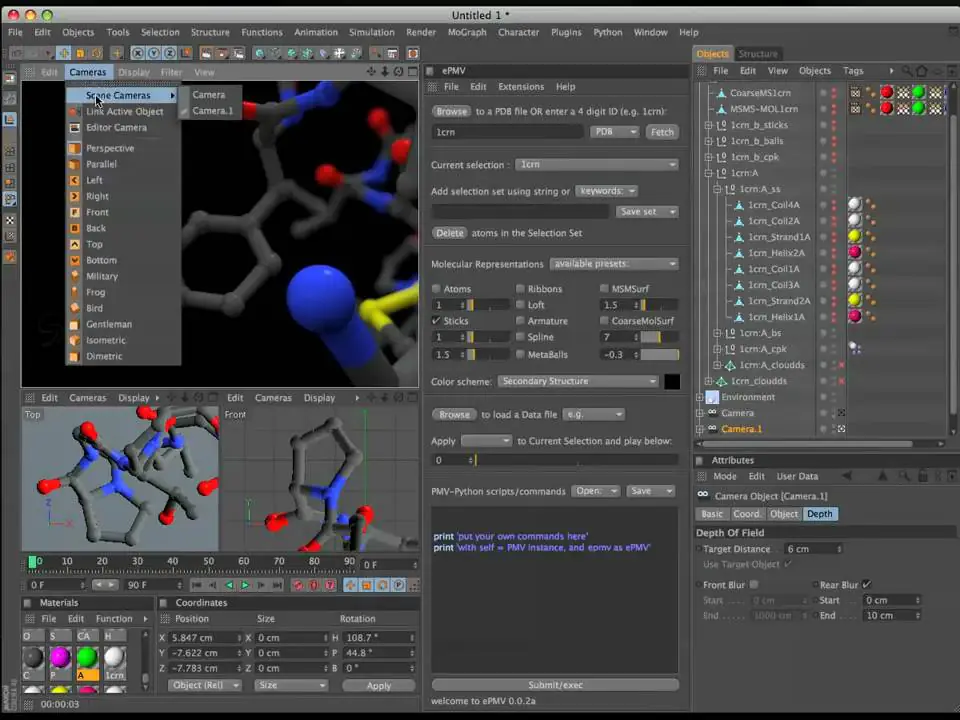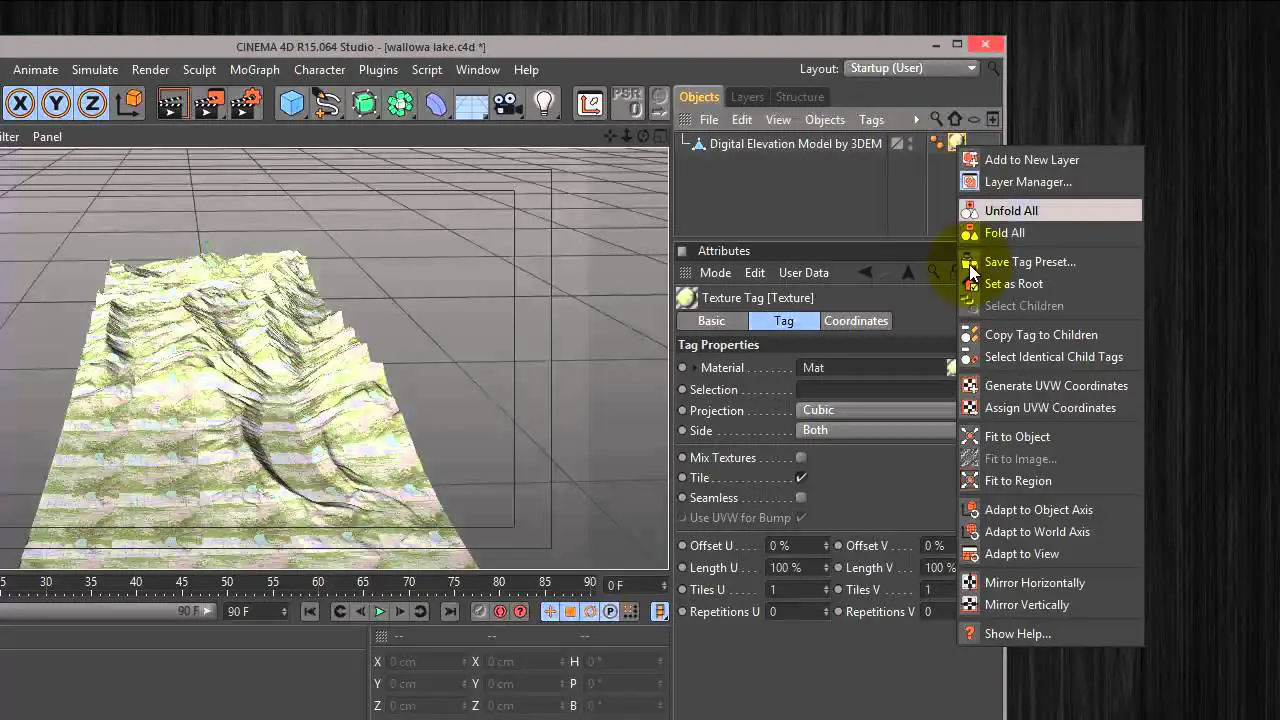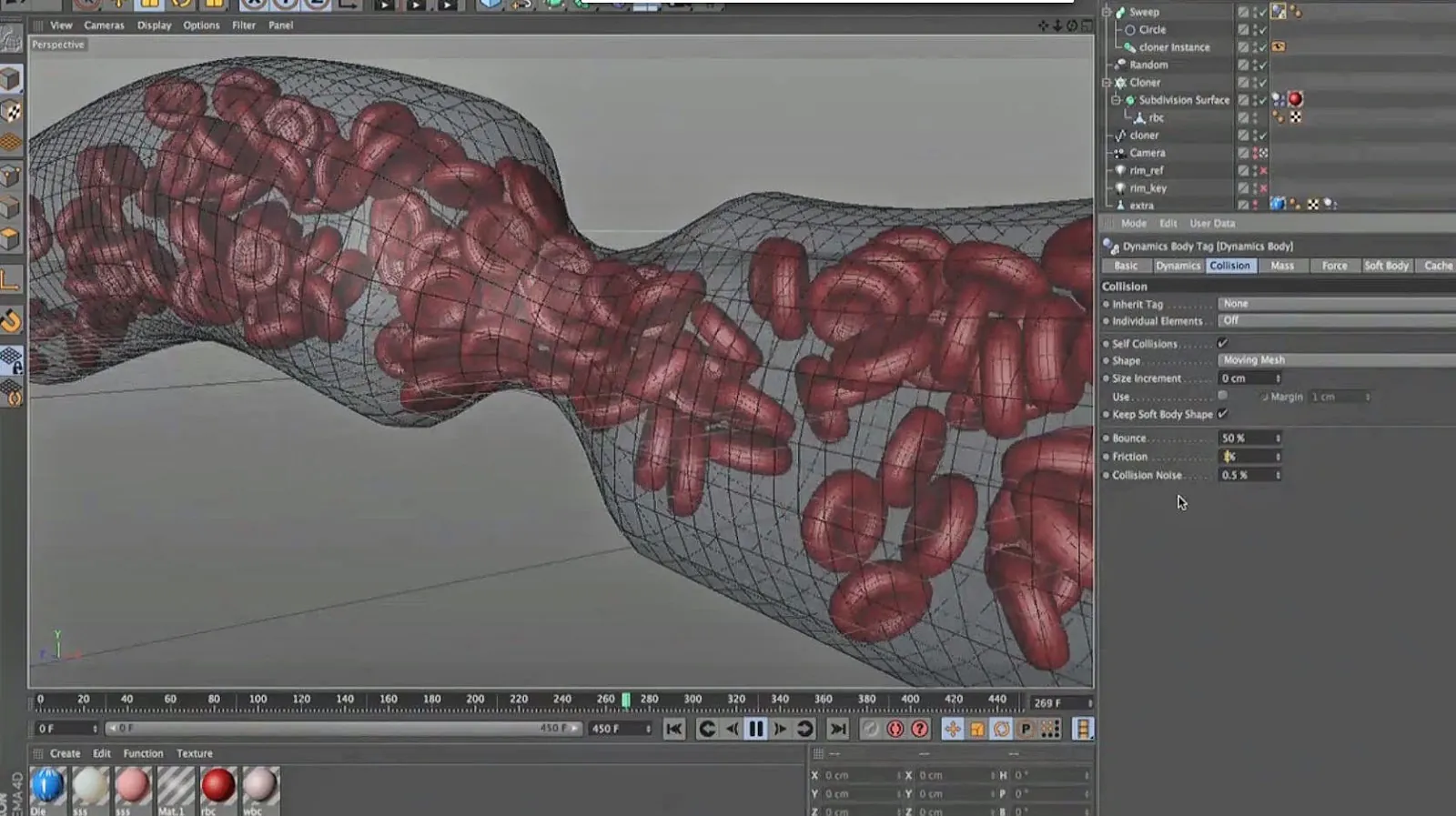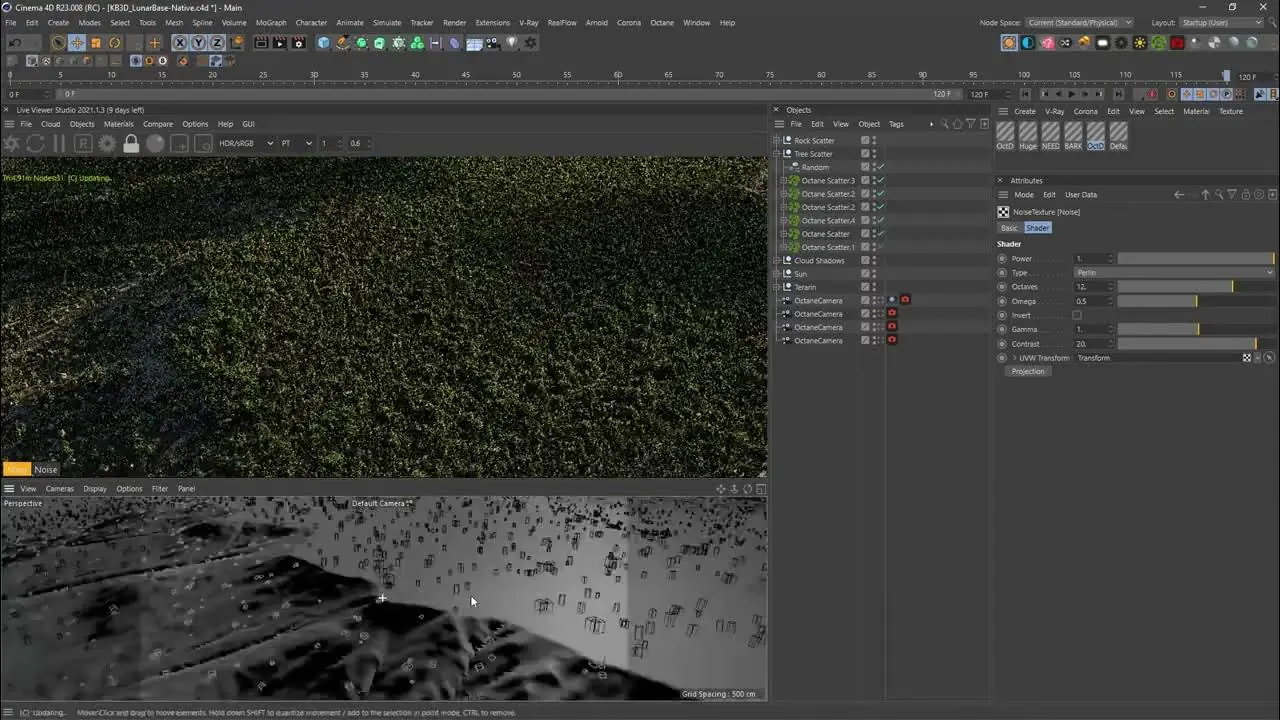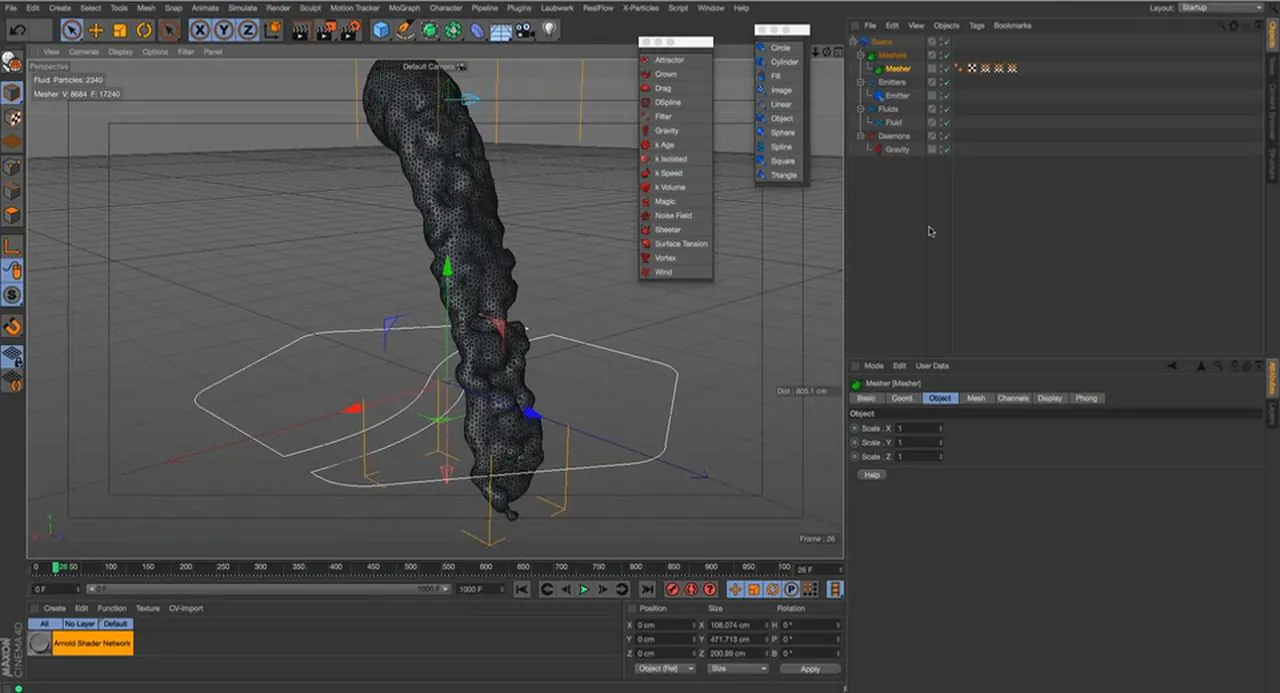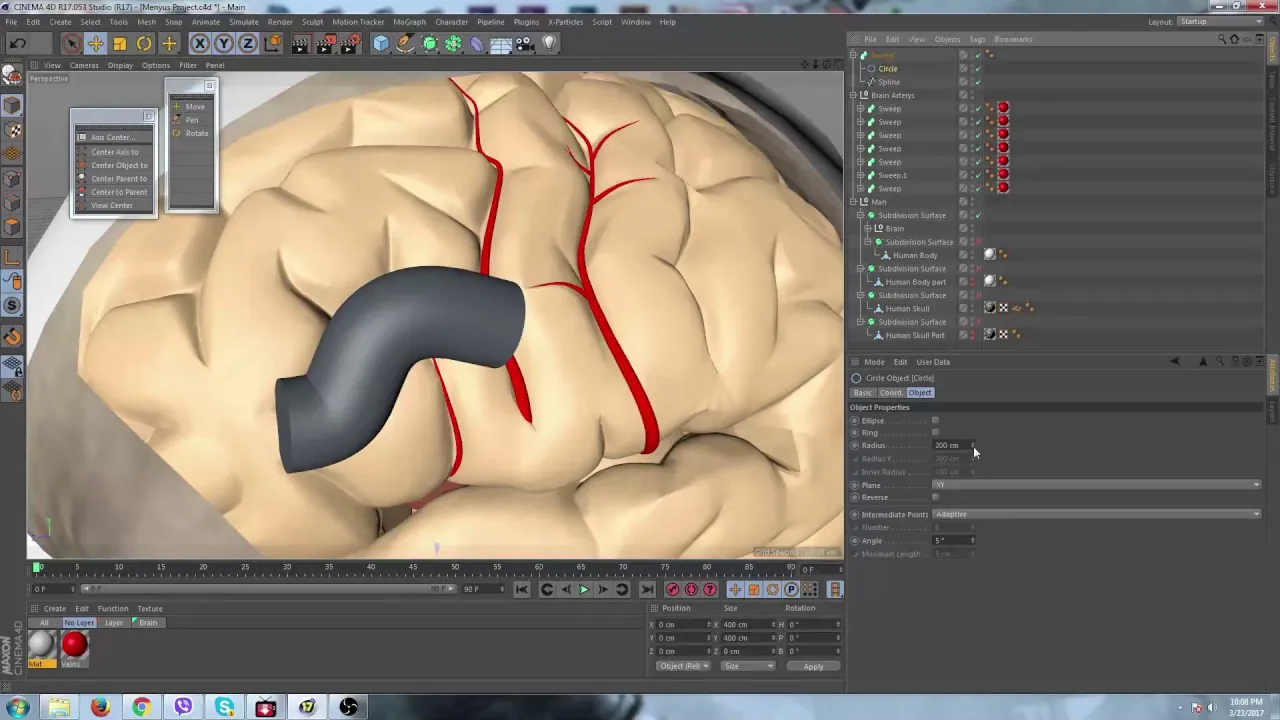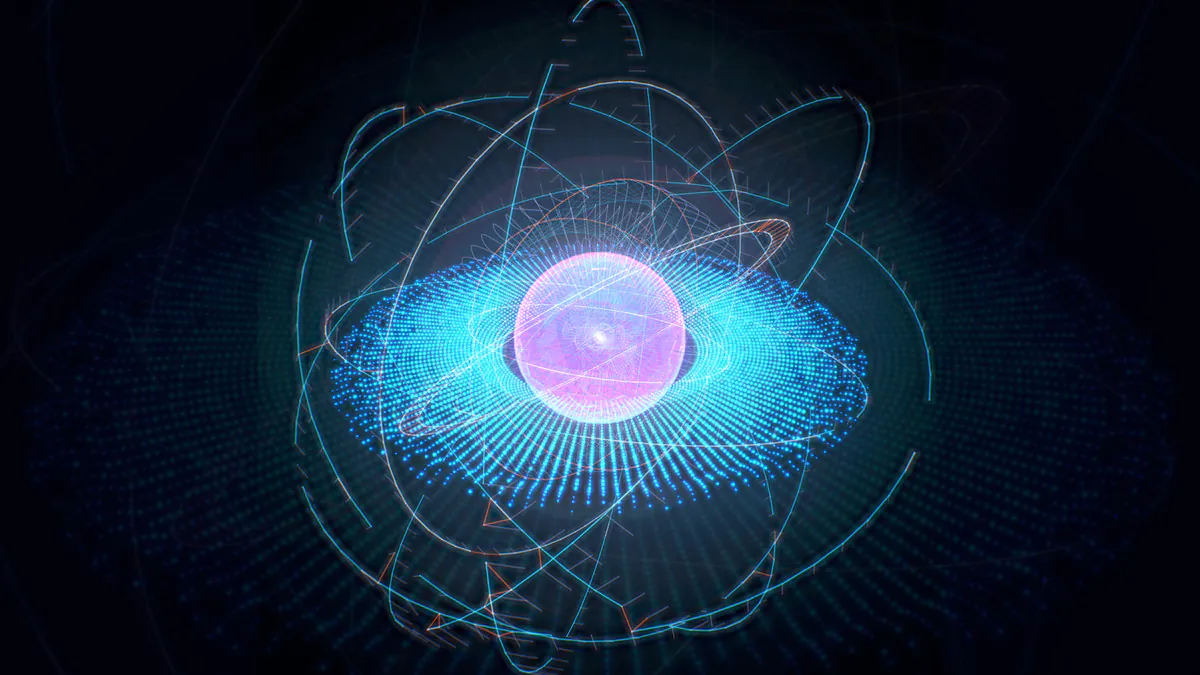
Can Cinema 4D Be Used For Scientific Visualisation?
Cinema 4D is a powerful 3D modeling, animation, and rendering software widely used in entertainment. However, many must know that it can also be used for scientific visualization. Scientific visualization involves using computer graphics to visualize scientific data, such as molecular structures, astronomical data, or medical images. While there are specialized software tools for scientific visualization, such as ParaView or VisIt, Cinema 4D offers a flexible and user-friendly interface that can be easily adapted for scientific purposes. Recently, there has been a growing clamor for visualizing scientific data more engagingly and interactively. 3D graphics and animation can help researchers communicate their findings more effectively and engage a wider audience. Cinema 4D’s advanced features, such as particle systems, dynamics, and deformers, can simulate complex phenomena and create visually stunning representations of scientific data. Additionally, Cinema 4D’s integration with other software tools, such as Adobe After Effects or Houdini, can further enhance its capabilities for scientific visualization.
This blog article is dedicated to exploring the potential of Cinema 4D for scientific visualization, including its advantages and limitations, as well as some examples of its use in various scientific fields. Whether you are a scientist, a science communicator, or a 3D artist interested in exploring new avenues, this blog will provide insights into the exciting world of scientific visualization with Cinema 4D.
Advantages of Using Cinema 4D for Scientific Visualization
Cinema 4D offers many advantages for scientific visualization, making it a popular choice among researchers and science communicators. Following are some of the main benefits of using Cinema 4D for scientific visualization:
Flexibility:
One of the main advantages of using Cinema 4D for scientific visualization is its flexibility. Unlike specialized software tools designed for specific scientific applications, Cinema 4D can be easily adapted to different types of scientific data and visualizations. Its user-friendly interface and workflow make it easy to create and manipulate 3D models, animate them, and render high-quality images and videos. This flexibility allows researchers to explore their data in new and creative ways and to communicate their findings to a broader audience.
Advanced Features:
Another advantage of Cinema 4D is its advanced features, such as particle systems, dynamics, and deformers. These tools can simulate complex phenomena, such as fluid dynamics, molecular interactions, or mechanical movements, and create visually stunning representations of scientific data. For example, in molecular visualization, Cinema 4D can simulate the behavior of atoms and molecules, build accurate models of proteins and DNA, and show their interactions. Similarly, Cinema 4D can be used in fluid dynamics to create simulations of fluid flows, such as airflows around a vehicle or water currents in a river.
Interactivity:
Another advantage of Cinema 4D is its ability to create interactive visualizations. Researchers can use Cinema 4D to create 3D models and animations that can be viewed and manipulated in real time. It helps viewers to explore the data from different perspectives and to interact with the visualization more engagingly. For example, Cinema 4D can be used in medical visualization to create interactive models of the human body that can be explored in real-time. That can be especially useful for medical education and training, allowing students to examine the anatomy of the human body in a more immersive way.
Ease of Use:
Cinema 4D is known for its user-friendly interface and intuitive workflow, making it easy for researchers who may need a background in computer graphics. The software provides a wide range of tools and features that can be easily accessed through a simple and intuitive interface. Additionally, Cinema 4D has a large online community that provides support and resources for users, including tutorials, forums, and plugins.
High-Quality Outputs:
Cinema 4D is also known for its high-quality outputs, such as photorealistic images and animations. The software uses advanced rendering algorithms to produce high-quality visuals with realistic lighting, shadows, and textures, which makes Cinema 4D a powerful tool for creating visually stunning representations of scientific data that can be used for presentations, publications, and outreach.
Collaboration:
Finally, Cinema 4D allows for collaboration between researchers and other stakeholders. The software enables users to import and export data in various formats, making it easy to share data and visualizations with others. Additionally, Cinema 4D allows for easy integration with other software tools, such as MATLAB, Python, or Blender, making it possible to combine the strengths of different software tools in one project.
In summary, Cinema 4D offers many advantages for scientific visualization, including flexibility, advanced features, interactivity, ease of use, high-quality outputs, and collaboration. These advantages make Cinema 4D a valuable tool for researchers and science communicators who want to create engaging and interactive visualizations of scientific data.
Examples of Using Cinema 4D for Scientific Visualization
Cinema 4D has been used in many scientific fields to create complex data visualizations, from molecular dynamics to astrophysics. Here are some examples of how Cinema 4D has been used for scientific visualization:
Molecular Visualization:
Cinema 4D can create 3D models of complex molecular structures, such as proteins and DNA. These models can help researchers to understand the structure and function of these essential molecules in a better way, aiding in drug discovery and other areas of research.
Geophysical Visualization:
Cinema 4D can create visualizations of geophysical phenomena, such as earthquakes and weather patterns. These visualizations can help researchers to understand these complex systems better and communicate their findings to the public.
Astronomy Visualization:
Cinema 4D can create visualizations of astronomical phenomena, such as galaxies and black holes. These visualizations can help researchers to understand these phenomena better and communicate their findings to the public.
Medical Visualization:
Cinema 4D can be used to create 3D models of human anatomy, which can be used for medical education and research. These models can also be used to plan and simulate medical procedures, such as surgeries.
Environmental Visualization:
Cinema 4D can create visualizations of environmental phenomena like climate change and deforestation. These visualizations can help researchers and policymakers to understand these complex issues better and communicate their findings to the public.
Fluid Dynamics Visualization:
Cinema 4D can create visualizations of fluid dynamics, such as fluid flow and turbulence. These visualizations can help researchers to understand these complex systems better and communicate their findings to the public.
Neuroscience Visualization:
Cinema 4D can be used to create visualizations of the brain and neural pathways, which can help researchers better understand the structure and function of the brain and aid in developing new treatments for neurological disorders.
In addition to these uses, there are many other potential applications for Cinema 4D in scientific visualization, and the field is constantly evolving as new techniques and technologies are developed.
It is important to note that while Cinema 4D can be a powerful tool for scientific visualization, its use must be carefully considered to ensure that the visualizations accurately represent the underlying data and phenomena. Additionally, creating compelling visualizations requires a deep understanding of the scientific concepts and the principles of visualization and design. However, with the right expertise and approach, Cinema 4D can be a valuable asset for scientific research and education.
Limitations of Using Cinema 4D for Scientific Visualization
While Cinema 4D offers many advantages for scientific visualization, it is crucial to be aware of its limitations. Here are some potential rules to consider:
Learning Curve: Cinema 4D is a complex software with a steep learning curve. It can take time and effort to master its various tools and features, which may be a barrier to some users.
Time-Intensive: Creating high-quality visualizations using Cinema 4D can be time-consuming. That is particularly true for large and complex datasets, which may require significant processing time and computational resources.
Data Limitations: Cinema 4D is limited by the available quality and quantity of data. The resulting visualizations may be misleading or incomplete if the data is complete or accurate. Additionally, if the data is too large or complex, Cinema 4D may be unable to handle it effectively.
Subjectivity: Creating visualizations using Cinema 4D can involve subjective decisions on the creator’s part. That can lead to a bias in the final product, potentially leading to inaccurate or misleading representations of the underlying data.
Technical Limitations: While Cinema 4D is a powerful tool, it may only be able to visualize some scientific data. For example, it may need help visualizing too complex or abstract data.
Accessibility: Cinema 4D requires specialized hardware and software, which may not be accessible to all researchers. Additionally, the software and hardware cost may be prohibitive for some users.
It is important to note that while these limitations exist, they do not necessarily negate the usefulness of Cinema 4D for scientific visualization. Instead, they should be considered when deciding whether to use Cinema 4D for a project. Careful consideration of the limitations and potential biases can help ensure that the resulting visualizations are accurate, informative, and accessible to the broadest possible audience.
Conclusion
Cinema 4D is a powerful 3D modeling, animation, and rendering software with many scientific visualization applications. It’s advanced features and user-friendly interface make it a versatile tool for creating visually stunning representations of scientific data. However, it has some limitations, like the need for specialized tools for scientific data analysis and processing, performance issues when dealing with large datasets, and cost. Despite these limitations, Cinema 4D remains a valuable tool for researchers and science communicators who want to create engaging and interactive visualizations of scientific data.



